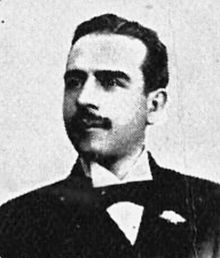Chimaltenango is a city in Guatemala with a population of 96,985. It serves as both the capital of the department of Chimaltenango and the municipal seat for the surrounding municipality of the same name. Chimaltenango stands some 56 kilometres (35 mi) west of Guatemala City, on the Pan-American Highway. The municipal capital produces textiles and pottery.
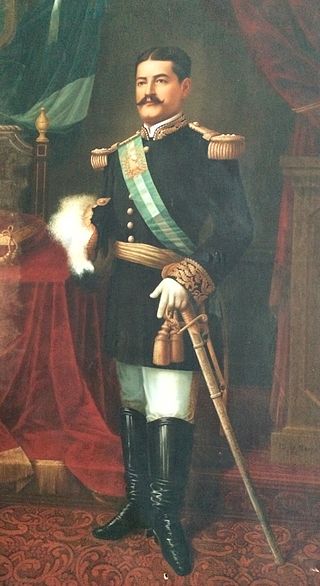
José María Reyna Barrios was President of Guatemala from 15 March 1892 until his death on 8 February 1898. He was born in San Marcos, Guatemala and was nicknamed Reynita, the diminutive form, because of his short stature.
Tucurú is a small town and municipality in the Guatemalan department of Alta Verapaz.
Purulhá is a town and municipality in the Baja Verapaz department of Guatemala. It is situated at 1570 m above sea level. The municipality has a population of 56,822 and covers an area of 536 km². The annual festival is June 10-June 13.
Iztapa, or Puerto de Iztapa, is a municipality in the Escuintla department of Guatemala. It is located on the shores of the Pacific Ocean and surrounded by Michatoya and Maria Linda Rivers, and also by the Canal de Chiquimulilla. Its population is about 15,000 people.

Morales is a municipality in Izabal Department of Guatemala. The municipality was created in 1920 and is formed by the town of Morales, 9 villages and 56 rural communities. The Cuevas del Silvino National Park is located a few kilometers northeast of Morales.

Ocós is a municipality in the San Marcos Department of Guatemala. It is situated on the Pacific Ocean coast, very close to the border with Mexico at 4 m (13 ft) altitude and two big rivers: the Suchiate and the Naranjo rivers. On 23 January 2014, it lost about 2/3 of its territory when La Blanca was named the thirtieth San Marcos Department municipality.
Pajapita is a town and municipality in the San Marcos department of Guatemala.It was created on 31 May 1920, after the station of Vado Ancho on the Panamerican Railroad of Guatemala was built. Due to its privileged location on the way from Guatemala to Mexico, Pajapita enjoyed considerable development while the Guatemalan railways were owned by International Railways of Central America (IRCA}, an American company that belonged to the United Fruit Company. However, with the decline of the rail that followed the constructions of major highways in the country the importance of the town of Vado Ancho diminished, to the point that in the early 21st century it was completely abandoned.

José Joaquín Palma Lasso was a Cuban writer who was the author of the Guatemalan national anthem's lyrics.

The Río Los Esclavos is a river in Southern Guatemala. Its sources are in the mountains in the southeast of the department of Santa Rosa. From there it flows past the town of Cuilapa through the coastal plains of Santa Rosa into the Laguna de Sipacate and then into the Pacific Ocean.

Natalia Górriz de Morales was a Guatemalan teacher, pedagogue, and the founder of the Instituto Normal Central para Señoritas in 1888. In 1892, the government of General José María Reina Barrios promoted her to the post of Inspector General of Girls' Schools in Guatemala City. She wrote a book dedicated to Christopher Columbus in honor of that year's fourth centenary of his landing. Her teaching career was put on hold when she married Próspero Morales, in 1894, but after his death in 1898, she started teaching again.

Rafael Spínola was a writer, journalist, politician and public speaker from Guatemala. Director of the well known cultura magazine La Ilustración Guatemalteca in 1896 and 1897, was Secretary of Infrastructure in Manuel Estrada Cabrera first presidential term. He also created the "Fiestas Minervalias", which were a celebration to the studious youth and the president Estrada Cabrera rule. He was also the one that signed the treaty granting the American company "The Central American Improvement Co. Inc." to finish the Northern Railroad -which had been left unfinished after president José María Reina Barrios assassination on 8 February 1898–, which would be the stepping stone for the operations of the United Fruit Company in Guatemala. He was the father of Guatemalan poetesse Magdalena Spínola (1896–1991).
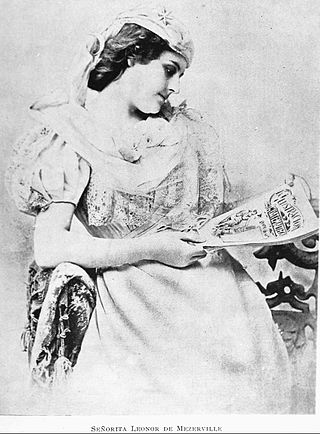
La Ilustración Guatemalteca was a biweekly cultural magazine that was published in Guatemala from 1 July 1896 to 15 June 1898. At a time when only 5% of the Guatemalan population could read, this magazine had extended articles aimed for the society elite and described numerous episodes of the later years of the presidency of general José María Reina Barrios, especially the economic crisis that originated when coffee – principal export from Guatemala at the time – and silver international prices plummeted. It also described the Exposición Centroamericana, an event that Reina Barrios organized to showcase the Interoceanic Railroad in Guatemala – at a time when the Panama Canal had not yet being built – and get Guatemala out of the crisis by means of international investors interested in move their products from the Atlantic to the Pacific Ocean. The magazine presented a good amount of pictures made by Alberto G. Valdeavellano, a photography pioneer from Guatemala.

Alberto G. Valdeavellano was the first landscape and sports photographer of Guatemala.

Ricardo Casanova y Estrada "The Great" was a Guatemalan Catholic priest that became the eleventh Archbishop of Guatemala from 1886 to 1913. He had a role opposing president general Manuel Lisandro Barillas Bercián (1885-1896), who eventually expelled Casanova y Estrada from Guatemala. After a generous amnesty granted by president general José María Reina Barrios on 13 March 1897, the archbishop returned to Guatemala and was received by large crowds and joy.

Próspero Morales was a Guatemalan lawyer who served as Secretary of Infrastructure, War and Public Instruction during José María Reina Barrios administration. Two year after being in office, Morales married the well known Guatemalan teacher Natalia Górriz. Morales resigned as Secretary on 5 March 1897 in order to run for president for the upcoming presidential elections; however, due to the failure of the Exposición Centroamericana and the severe economic crisis that Guatemala was undergoing at the time, due to the plummeting of coffee and silver international prices, general Reina Barrios suspended the elections and forcibly extended his tenure until 1902. Morales then joined the revolution that was brewing in Quetzaltenango, but the rebels were defeated on 14 September 1897. After Reina Barrios assassination on 8 February 1898, he unsuccessfully tried to overthrow interim president Manuel Estrada Cabrera–who also had served as Secretary under Reina Barrios–but was repelled by the forces of former president Manuel Lisandro Barillas.
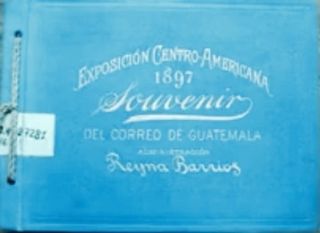
The Exposición Centroamericana was an industrial and cultural exposition that took place in Guatemala in 1897 and which was approved on 8 March 1894 by the National Assembly by Decree 253 by a suggestion made by president general José María Reina Barrios, at a time when both coffee – only Guatemalan export at the time- and silver international prices were at an all-time high. Its main goal was to showcase the Interoceanic railroad between Iztapa on the Pacific coast and Puerto Barrios on the Atlantic, a project that was well ahead by January 1897, but that was left unfinished when Guatemala went into a deep crisis due to both coffee and silver international prices plummeting after the government had built numerous public buildings and palaces in Guatemala City, simultaneously with the railroad projects. As a result, the Expo failed dramatically, the Guatemalan economic crisis gave rise to several rebellions -mainly the ones in the Highlands and the one on the Eastern Side and president Reina Barrios was eventually assassinated on 8 February 1898.
The Temple of Minerva was a Greek style temple erected in Guatemala City by the government of president Manuel Estrada Cabrera in 1901 to celebrate the Fiestas Minervalias. Soon, the main cities in the rest of Guatemala built similar structures as well.
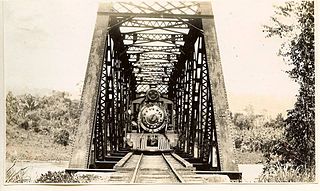
The Northern Railroad of Guatemala was a railway system that ran from Guatemala City to Puerto Barrios, the main port of Guatemala, between 1896 and 1968. The American United Fruit Company had the monopoly of the railway system through its affiliate, International Railways of Central America, along with the docks at Puerto Barrios, the banana plantations in Izabal and the cargo and passenger transport with its Great White Fleet. The system was highly efficient, but once a parallel highway was built, it could not compete and eventually was handed back to the State of Guatemala in 1968. After that, the system slowly lost its relevance, as the trucks were more profitable than railway transportation along this route. It ceased regular operations in 1996, and has remained partially abandoned since.
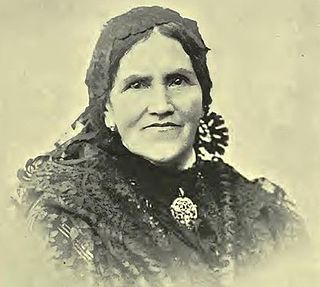
Celia Barrios Mazariegos de Reina was the mother of President José María Reina Barrios and the 1st First Mother of Guatemala, and the sister of President Justo Rufino Barrios.
